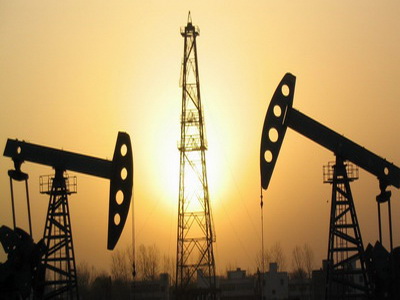 在能源领域有着不可预知的价格差距。自从2月份以来,每桶石油的价格一直都保持在100美元以上,而天然气的价格则每百万热量单位都从去年的6月份4.85美元,下降了2美元。海纳国际集团分析师Duane Grubert表示,这种情况在以前从来没有发生过。上一次天然气价格降至如此之低是在2002年,当时每桶石油的价格是20美元。
在能源领域有着不可预知的价格差距。自从2月份以来,每桶石油的价格一直都保持在100美元以上,而天然气的价格则每百万热量单位都从去年的6月份4.85美元,下降了2美元。海纳国际集团分析师Duane Grubert表示,这种情况在以前从来没有发生过。上一次天然气价格降至如此之低是在2002年,当时每桶石油的价格是20美元。
在传统的关系中,高油价会导致天然气价格降低。天然气厂商正在减少天然气产量,希望以此来提高天然气价格。根据开采公司Baker Hughes表示, 上周整个天然气行业的钻机数就下降了23,降至624,这是在最近10里的最低值。但是天然气的产量仍然保持上升的趋势。能源信息管理中心表示,2012年,每天的天然气产量预计为6920亿立方米,比去年的6620亿立方米要多的多。因此天然气的供给也一直保持增长。能源信息管理中心预计到今年10月份,天然气的储量将要达到4.1万亿立方米,去年此时的存储量为2.5万亿立方米。
加拿大的7家天然气生产商的信贷额度已经下降,因为他们的天然气储藏价值已经大大降低。不断减少的信用额度意味着用于勘探和开发的资金也将更少。投资人也同样感受到了这种痛苦。美国仅次于埃克森美孚国际公司的第二大天然气生产商Chesapeake Energy 的股票从2011年8月,已经下降了50%。加拿大的最大天然气生产商Encana的股票在过去的11个月中也下降了50%。 J. Marshall Adkins的分析师Raymond James (RJF) 表示,天然气价格对美国公民来说太廉价了。但是对于生产上来说,5美元的时候有利可图,但是2美元的时候,真是没有任何利润。
There’s an unprecedented price gap in the energy patch. Oil has traded above $100 a barrel since February, while natural gas prices have dropped below $2 per million British thermal units—from $4.85 in June of last year. A divergence like this “has never happened before,” says Duane Grubert, an energy analyst with Susquehanna Financial Group. The last time natural gas prices were this low, in 2002, oil was at $20 a barrel.
In a departure from their traditional relationship, high oil prices are helping keep gas prices down. Natural gas producers are cutting production in hopes of bringing down supplies and therefore increasing prices. The industrywide gas rig count fell by 23 last week, to 624, the lowest in 10 years, according to driller Baker Hughes (BHI). Yet production keeps growing. It is projected to average 69.2 billion cubic feet per day in 2012, up from an average 66.2 billion cubic feet per day last year, according to the Energy Information Administration. And supplies keep growing. The EIA predicts natural gas in storage will reach a record 4.1 trillion cubic feet by October, compared with 2.5 trillion cubic feet now.
Seven Canadian natural gas producers have seen their credit lines reduced because of the falling value of their natural gas reserves. Less credit means less money available to invest in exploration and drilling. Shareholders are feeling the pain as well. Chesapeake Energy (CHK), the second-largest gas producer in the U.S. after ExxonMobil, has seen its stock fall 50 percent since August 2011. Shares of Canada’s largest producer, Encana (ECA), have fallen 50 percent in 11 months. The price of natural gas is “ridiculously bullish for U.S. consumers,” says Raymond James (RJF) analyst J. Marshall Adkins. “But the producers? At $5 natural gas, everyone was making great money. At $2, it’s hard to make any profit.”There’s an unprecedented price gap in the energy patch. Oil has traded above $100 a barrel since February, while natural gas prices have dropped below $2 per million British thermal units—from $4.85 in June of last year. A divergence like this “has never happened before,” says Duane Grubert, an energy analyst with Susquehanna Financial Group. The last time natural gas prices were this low, in 2002, oil was at $20 a barrel.
In a departure from their traditional relationship, high oil prices are helping keep gas prices down. Natural gas producers are cutting production in hopes of bringing down supplies and therefore increasing prices. The industrywide gas rig count fell by 23 last week, to 624, the lowest in 10 years, according to driller Baker Hughes (BHI). Yet production keeps growing. It is projected to average 69.2 billion cubic feet per day in 2012, up from an average 66.2 billion cubic feet per day last year, according to the Energy Information Administration. And supplies keep growing. The EIA predicts natural gas in storage will reach a record 4.1 trillion cubic feet by October, compared with 2.5 trillion cubic feet now.
Seven Canadian natural gas producers have seen their credit lines reduced because of the falling value of their natural gas reserves. Less credit means less money available to invest in exploration and drilling. Shareholders are feeling the pain as well. Chesapeake Energy (CHK), the second-largest gas producer in the U.S. after ExxonMobil, has seen its stock fall 50 percent since August 2011. Shares of Canada’s largest producer, Encana (ECA), have fallen 50 percent in 11 months. The price of natural gas is “ridiculously bullish for U.S. consumers,” says Raymond James (RJF) analyst J. Marshall Adkins. “But the producers? At $5 natural gas, everyone was making great money. At $2, it’s hard to make any profit.”
 在能源领域有着不可预知的价格差距。自从2月份以来,每桶石油的价格一直都保持在100美元以上,而天然气的价格则每百万热量单位都从去年的6月份4.85美元,下降了2美元。海纳国际集团分析师Duane Grubert表示,这种情况在以前从来没有发生过。上一次天然气价格降至如此之低是在2002年,当时每桶石油的价格是20美元。
在能源领域有着不可预知的价格差距。自从2月份以来,每桶石油的价格一直都保持在100美元以上,而天然气的价格则每百万热量单位都从去年的6月份4.85美元,下降了2美元。海纳国际集团分析师Duane Grubert表示,这种情况在以前从来没有发生过。上一次天然气价格降至如此之低是在2002年,当时每桶石油的价格是20美元。
